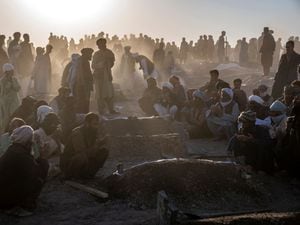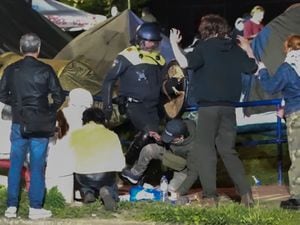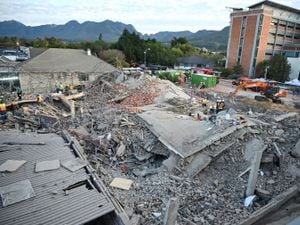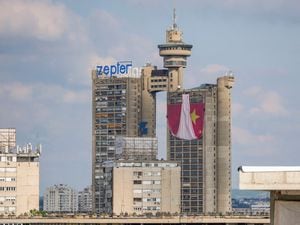Afghanistan shaken by fresh earthquake
The 6.3-magnitude tremor struck in the area where an earthquake on Saturday killed more than 2,000 people.

Another strong earthquake has shaken part of western Afghanistan after an earlier quake killed more than 2,000 and flattened whole villages.
The latest magnitude 6.3 earthquake was about 17 miles (28km) outside Herat, the capital of Herat province, and six miles (10km) deep, according to the US Geological Survey.
It triggered a landslide that blocked the main road between Herat and Torghondi, information ministry spokesman Abdul Wahid Rayan said.
Janan Sayiq, a spokesman for the Afghan Taliban government’s national disaster authority, said the earthquake on Wednesday killed at least one person and injured around 120 others.
The aid group Doctors Without Borders said the Herat regional hospital had received 117 injured from Wednesday’s quake. The group, also known by its French acronym MSF, said it had sent additional medical supplies to the hospital and was setting up four more medical tents at the facility.

“Our teams are assisting in triaging emergency cases and managing stabilised patients admitted in the medical tents,” MSF said on X, formerly known as Twitter.
Wednesday’s quake also flattened all 700 homes in Chahak village, which was untouched by the tremors of previous days.
There were mounds of soil where dwellings used to be. But there were no deaths initially reported in Chahak because people had taken shelter in tents this week, fearing for their lives as tremors continued to rock Herat.
Villagers were distraught at the loss of their homes and livestock, often their only possessions, and worried about the coming harsh winter months. Some said they had never seen an earthquake before and wondered when the shaking of the ground would stop.
Many said they had no peace of mind inside the tents for fears the “ground will open and swallow us at any moment”.
The epicentre of Saturday’s quake was about 25 miles (40km) northwest of the provincial capital, and several aftershocks have been strong, including another of magnitude 6.3 on Saturday.

Taliban officials said more than 2,000 had died across Herat after the earlier quakes. They subsequently said the quakes killed and injured thousands but did not give a breakdown of casualties.
Besides rubble and funerals after Saturday’s devastation, there is little left of the villages in the region’s dusty hills.
In Naib Rafi, a village that previously had about 2,500 residents, people said almost no-one was still alive besides men who were working outside when the quake struck. Survivors worked all day with diggers to dig long trenches for mass burials.
On a barren field in the district of Zinda Jan, a bulldozer removed mounds of earth to clear space for a long row of graves.
“It is very difficult to find a family member from a destroyed house and a few minutes to later bury him or her in a nearby grave, again under the ground,” said Mir Agha, from the city of Herat, who had joined hundreds of volunteers to help the locals.
Nearly 2,000 houses in 20 villages were destroyed, the Taliban said. The area hit by the quakes had one government-run hospital.

On Tuesday, UN deputy spokesman Farhan Haq said Zinda Jan was the worst-affected area, with more than 1,300 people killed and nearly 500 people still reported missing.
He said UN satellite imagery also indicated extreme levels of destruction in the district of Injil.
“Our humanitarian colleagues warn that children are particularly vulnerable and have suffered severe psychological distress from the earthquake,” he said.
Zabihullah Mujahid, the main spokesman for the Taliban government, said Iran had sent 15 vehicles loaded with aid alongside support and technical teams, while Turkey sent medical teams, food, non-food items and medicine.
The United Arab Emirates and Turkmenistan also helped with food, medicine and clothes and a technical team of 49 members from Kazakhstan is assisting those affected by the quake.
Mr Mujahid added that Saudi Arabia provided financial assistance to the people of Herat while China donated 200,000 dollars (£173,000) in cash aid through the Afghan Foreign Affairs ministry.
Neighbouring Pakistan was also among the countries that had offered assistance but the delivery of its humanitarian aid had been on hold since Monday.
On Wednesday morning, the pledged supplies had yet to leave Pakistan. Authorities were waiting for “clearance” from the Taliban, two government officials in Islamabad said.
Ties between the two countries have come under pressure since Pakistan announced a deadline for undocumented migrants, including 1.7 million Afghans living illegally in the country, to leave before October 31 to avoid arrests and forced deportation.





